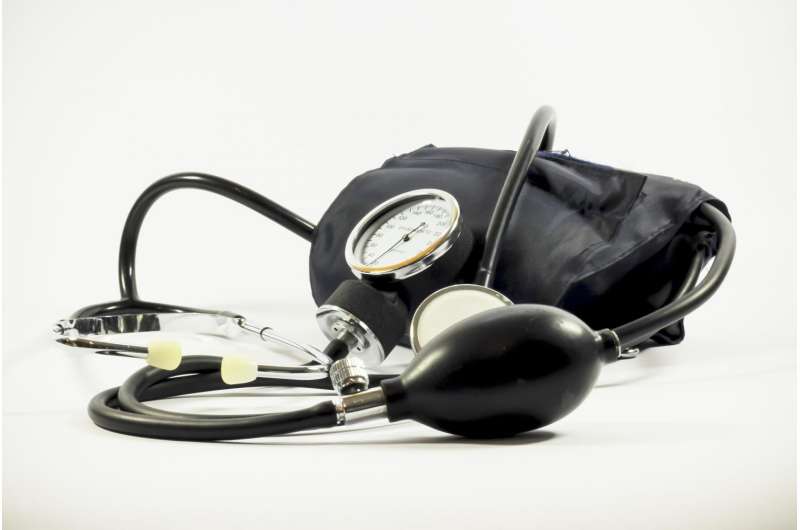Community intervention among low-income patients results in improved blood pressure control

Low-income patients in Argentina with uncontrolled high blood pressure who participated in a community health worker-led multicomponent intervention experienced a greater decrease in systolic and diastolic blood pressure over 18 months than did patients who received usual care, according to a study published by JAMA.
Despite extensive knowledge of hypertension prevention and treatment, the global prevalence of hypertension is high and increasing, while the proportion of controlled hypertension is low, especially in low- and middle-income countries. Developing and implementing effective, affordable, and sustainable programs for hypertension control is a public health priority in low and middle-income countries.
Jiang He, M.D., Ph.D., of the Tulane University School of Public Health and Tropical Medicine, New Orleans, and colleagues randomly assigned to a multicomponent intervention or usual care 18 centers in Argentina providing free health care to uninsured, low-income adult patients with uncontrolled hypertension patients (n = 1,432). The multicomponent intervention included a community health worker-led home intervention (health coaching, home blood pressure [BP] monitoring, and BP audit and feedback), a physician intervention, and a text-messaging intervention.
Over 18 months, patients in the intervention group experienced a greater decrease in systolic and diastolic BP than did patients who received usual care. The proportion of patients with controlled hypertension (BP <140/90 mm Hg) increased from 17 percent at baseline to 73 percent in the intervention group and from 18 percent to 52 percent in the usual care group. The multicomponent intervention significantly increased patients' adherence to antihypertensive medication and physicians' adherence to treatment guidelines.
The study notes some limitations, including that selection bias could have occurred. However, patients with hypertension and their family members were systematically recruited to avoid selection bias.
"This study showed that community health workers can play an important role in hypertension control among low-income communities," the authors write. "Further research is needed to assess generalizability and cost-effectiveness of this intervention and to understand which components may have contributed most to the outcome."
More information: JAMA (2017). jamanetwork.com/journals/jama/ … 1001/jama.2017.11358
















